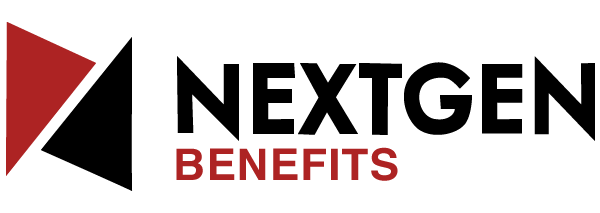
Curated for crisis management, this is designed to help executives & business owners cut
controllable costs starting with healthcare.
If you believe that healthcare costs and health insurance rates will increase annually, and there's nothing that can be done about…we're here to tell you that's not the case.
We all know that rising health care costs drive up the cost of insurance premiums. The higher the premium the more revenue and higher profits most insurance companies make, but do you ever see a decrease in costs or premiums with this model? If your annual premiums total $1 million but your employees only use $600,000 of health care, do you get any of that overcharge back? Of course not. But you almost certainly will get a premium increase at your renewal, despite grossly overpaying in the previous year.
Here at Summit Insurance we do things differently. To make your healthcare a controllable cost, it's necessary to move from a fully insured health plan to an alternative funding arrangement that has two major benefits:
- You pay only for the health care your employees actually purchase during the year, and
- You gain total control over your health care spend and all aspects of your health plan.
We want to eliminate your employees' out of pocket costs. Sadly, deductibles have risen so much that many employees now pay for insurance they can't use except for illnesses and real emergencies where they have no choice, like heart attacks, stroke, cancer and serious accidents. With just 41 percent of Americans able to cover a $1,000 emergency expense with savings, for many employees a $1,500, $3,000, or a $5,000 health care deductible can be an insurmountable barrier to accessing needed care.
When circumstances force an employee to see care, serious conditions or injuries can leave your employees facing an out-of-pocket expense of up to $8,150 for an individual or $16,300 for a family. A joint study from Harvard Medical School and Harvard Law School found that over half of bankruptcies in this country involve unpaid medical bills. Of those who filed because of medical debt, 75 percent had insurance when they became ill or injured.
But while the status quo practice is to shift more health care costs onto employees, companies that take control of their health care spend and manage the costs can provide health care to their employees with lower or even zero out of pocket expenses. The health care cost savings often allow these companies to eliminate the deductible and co-insurance. Imagine a company's competitive advantage in recruiting and retaining talent with low insurance premiums and "free health care."
When you manage your own health care supply chain, a more affordable and sustainable health care spend for the employer; much better benefits for the employees; and a ROI measurable in easier recruitment, higher retention, and greater productivity.
The secret to making health care a controllable cost and lowering that cost is as simple as:- Treating your health care spend as a capital allocation;
- Providing oversight of the health care spend by and executive with P&L responsibility
- Moving to alternative funding to take control of your heath care spend and health plan; and
- Managing your health care supply chain to reduce the frequency and severity of claims.
At Summit we act and help move you in the right direction. We take immediate action and help you in the following areas:
- Pharmacy is some of the lowest hanging fruit for cost containment. There is much waste and abuse in a lot of pharmacy spend.
- We can help you implement a pharmacy cost-containment vendor that works with your traditional Pharmacy benefits manager to ensure generic equivalents are used, employees are obtaining the lowest cost for their drugs. Savings: 15-20 percent of your Rx spend over 12 months.
- Suggest you retain a fiduciary PBM to manage your employees' prescriptions. Savings: 40-50 percent of your Rx spend withing 30-60 days.
- Implement a specialty-drug cost mitigation program to source high-cost specialty meds. Savings: 60-100 percent of your specialty-drug spend within 60-90 days; 100 percent ($0 copay) for employees on specialty drugs.
- Health Care Advocacy & Telehealth
- Install a health care advocacy/concierge service as the entry point to your health plan, requiring employees to contact the advocate to access the health care system. We provide a range of information and assistance, from information on the health plan, health questions, even access to a nurse for clinical questions. The health advocate concierge should service a s the gatekeeper for your health plan, directing employees to your zero-dollar copay telehealth service as a first step before employees engage more costly options, such as a physician, urgent care, or the emergency room. Find more about our app here (link to our platform)
- Implement a $0-copay telehealth service that makes physicians available to employees via smartphone, tablet, or computer at half to a third less than the cost to your plan of a visit to a doctor's office. Also improves productivity by eliminating time absenteeism due to office visits during work hours and sick days due to incidental infections from exposure to other patients. Savings: Estimated savings average $472 per visit by keeping employees from unnecessary visits to the doctor's office, urgent care, or the emergency room.
- Medical Claims
- Negotiate excessive hospital and surgery center charges. Charges to employer-sponsored plans are often 300 percent above the price allowed by Medicare, which the government sets at cost plus a reasonable profit. Savings: 30-80+ percent.
- Review medical claims to ensure payment integrity by identifying and recovering funds based on improper and inaccurate provider charges. Savings: seven percent of annual spend times the number of years allowed for the lookback.
- Medical Utilization
- Require a second opinion on ever procedure above a certain dollar amount. Use a low-cost virtual second opinion service that uses top specialists across the country and requires no office visit by the employee. Savings: Over 20 percent of patients with a serious diagnosis are first misdiagnosed, according to the Mayo Clinic. The least costly claim is the one that never occurs.
- Provide employees with high-value (high outcomes/low cost) providers for their health care needs. Savings: 50-70+ percent on each procedure when the employee follows the nurses' recommendation of provider(s).
- Implement a bundled-price surgery option to make these high-quality/low-cost procedures available to your employees. Savings: 30-80+ percent on each diagnostic test.
- Once one or more of the above medical utilization plans are in place, incentivize your employees to make smart provider choices by creating a program to reduce or eliminate employee out of pocket health care costs when they choose a high-value health care provider or low-cost imaging center. Savings: See above.
- Behavioral Health
- Implement an Employee Assistance Program, which provides employees with counseling sessions with a professional therapist at no cost to the employee or your plan (three to five sessions, depending on the program). These counseling sessions are available over the phones, as well as in person with a local counselor. Savings: Employees needing counseling always should be directed to the EAP first to save your health plan the cost of 3-5 sessions.
- Engage a virtual behavioral health counseling service that increases access to mental health treatment by providing services via smartphone, tablet, or computer. For use after an employee exhaust the EAP counseling benefit, these counseling sessions are available at low or no cost to the employee and at a substantially reduced cost to your plan. Savings: Addresses an important employee need while controlling costs to save over current counseling options.
Our goal is to improve the quality of care and lower health care costs for both employers and employees. Working with us the deploy standard practice to manage health care costs, companies reduce their year-over-year health care spend by 10 to 20% or more – in the first year alone. Call us today to begin implementing these action steps.

NEXT GEN Benefits Council is responsible for many of the recent changes to the National Healthcare Delivery System & Dawn Sheue is one of the TOP 40 Benefits Advisors in the United States that sits on the NEXT GEN Benefits Council.
